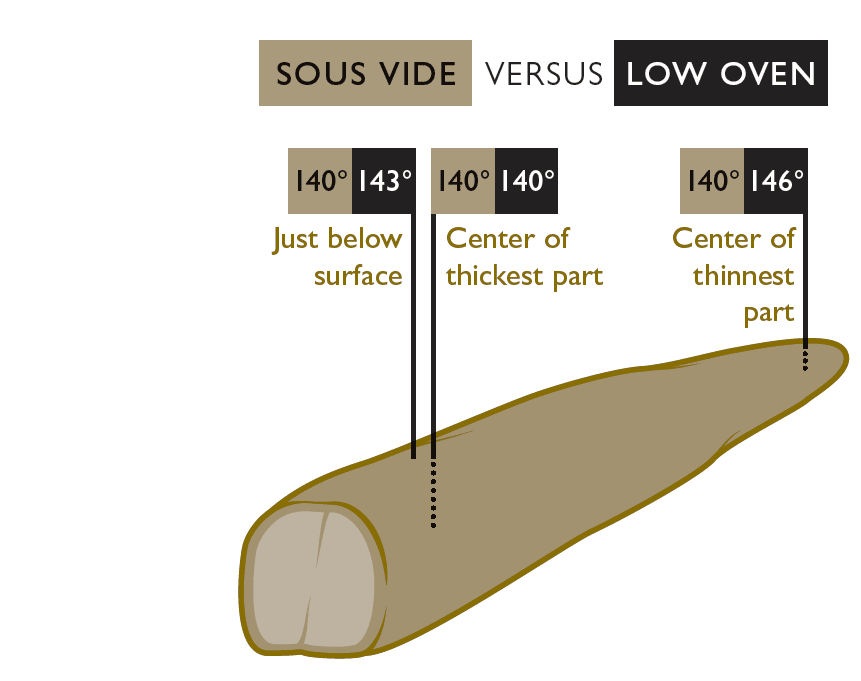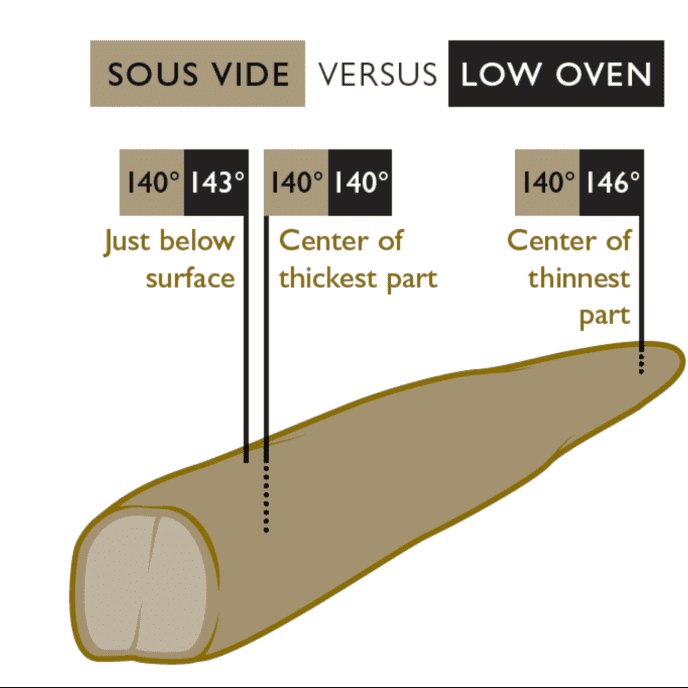Thought you guys might find this interesting. I don't currently use either technique.
Using a Low Oven versus Sous Vide
BY COOK'S ILLUSTRATED PUBLISHED MARCH 2018
To compare these two methods, we cooked a 1-pound pork tenderloin each way then took each roast's temperature. Here's how the two approaches measured up.
We offer two cooking methods for pork tenderloin steaks, both of which ensure well-browned exteriors and rosy interiors: a sous vide method and a low-oven method. The former gently cooks the pork (first sealed in plastic bags) in a water bath kept at the desired serving temperature of 140 degrees via an immersion circulator; the latter mimics the sous vide method by slowly bringing the meat to 140 degrees in a 275-degree oven. In both cases, we briefly sear the meat afterward in a hot skillet to create nicely browned crusts.
To compare the two methods, we cooked a 1-pound pork tenderloin each way and took each roast's temperature at three locations: the center of the thickest part (where we normally take the temperature of meat), just below the surface at the thickest part, and in the center of the tapered end, the area most likely to overcook.

Here's how the two approaches measured up.
SOUS VIDE METHOD: Meat registered precisely 140 degrees at all three points.
OVEN METHOD: Meat registered 140 at the center of the thickest part but was a few degrees higher closer to the surface and at the tapered end; also had a slight color difference just below the surface.
BOTTOM LINE: Using an immersion circulator is the only way to guarantee perfectly even temperature in food, inside to out, but our more conventional method gets you very close.
Using a Low Oven versus Sous Vide
BY COOK'S ILLUSTRATED PUBLISHED MARCH 2018
To compare these two methods, we cooked a 1-pound pork tenderloin each way then took each roast's temperature. Here's how the two approaches measured up.
We offer two cooking methods for pork tenderloin steaks, both of which ensure well-browned exteriors and rosy interiors: a sous vide method and a low-oven method. The former gently cooks the pork (first sealed in plastic bags) in a water bath kept at the desired serving temperature of 140 degrees via an immersion circulator; the latter mimics the sous vide method by slowly bringing the meat to 140 degrees in a 275-degree oven. In both cases, we briefly sear the meat afterward in a hot skillet to create nicely browned crusts.
To compare the two methods, we cooked a 1-pound pork tenderloin each way and took each roast's temperature at three locations: the center of the thickest part (where we normally take the temperature of meat), just below the surface at the thickest part, and in the center of the tapered end, the area most likely to overcook.

Here's how the two approaches measured up.
SOUS VIDE METHOD: Meat registered precisely 140 degrees at all three points.
OVEN METHOD: Meat registered 140 at the center of the thickest part but was a few degrees higher closer to the surface and at the tapered end; also had a slight color difference just below the surface.
BOTTOM LINE: Using an immersion circulator is the only way to guarantee perfectly even temperature in food, inside to out, but our more conventional method gets you very close.




Comment